Opened 1889–1915 Owner New York City Termini Metropolitan Avenue | Number of tracks 2 Electrification Railway electric traction Stations 7 | |
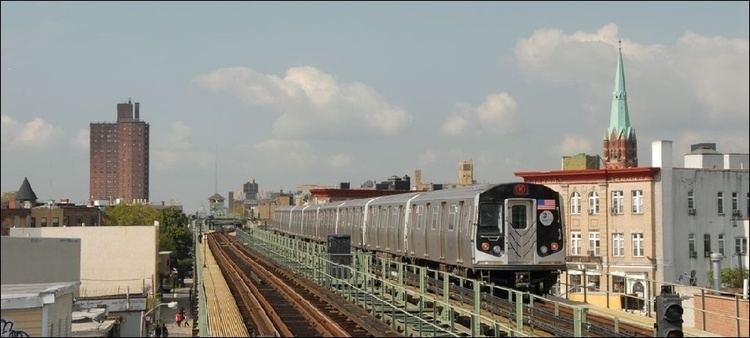 | ||
Closed 1969 (segment west of Central Avenue) Character Street level (Metropolitan Avenue only)Elevated Operator | ||
Bmt myrtle avenue line r160a 1 m action at central avenue
The Myrtle Avenue Line, also called the Myrtle Avenue Elevated, is a fully elevated line of the New York City Subway as part of the BMT division. The line is the last surviving remnant of one of the original Brooklyn elevated railroads. The remnant line operates as a spur branch from the Jamaica Line to Bushwick, Ridgewood and Middle Village, terminating at its original Eastern terminal across the street from Lutheran Cemetery. Until 1969, the line continued west into Downtown Brooklyn and until 1944, over the Brooklyn Bridge to a terminal at Park Row in Manhattan.
Contents
- Bmt myrtle avenue line r160a 1 m action at central avenue
- Mta new york city subway forest avenue bmt myrtle avenue line
- Extent and service
- History
- Chaining information
- References
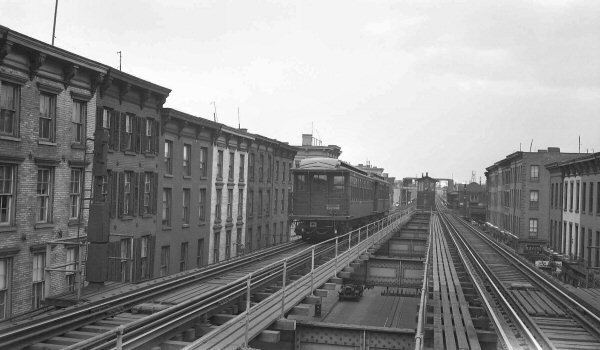
Mta new york city subway forest avenue bmt myrtle avenue line
Extent and service
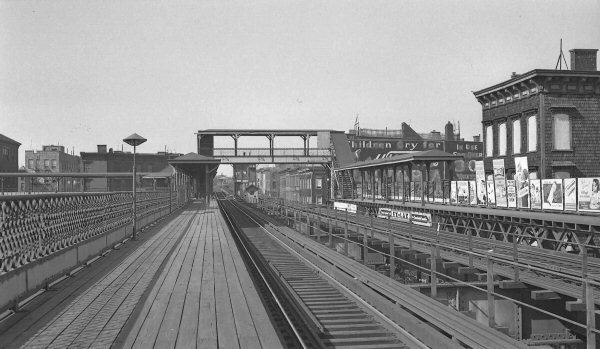
The Myrtle Avenue Line is currently served by the M service. The line begins at Metropolitan Avenue in Middle Village, Queens. It heads southwest along a private right-of-way, eventually joining an elevated structure above Palmetto Street in Ridgewood and Myrtle Avenue in the Brooklyn neighborhood of Bushwick. Just before reaching Broadway (on which the BMT Jamaica Line operates), the line curves to the left and merges into the Jamaica Line tracks just east of the Myrtle Avenue station. The still-existing upper level of the station, which was called "Broadway", opened in 1889 and closed on October 4, 1969.
History
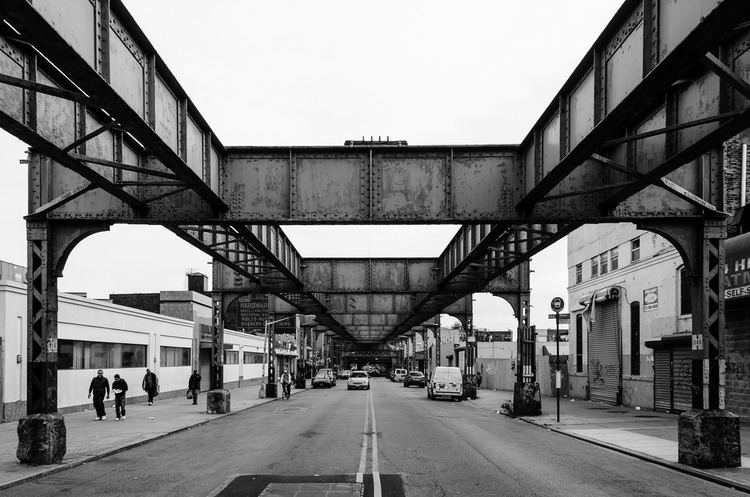
The first section of the line ran over Myrtle Avenue from Johnson and Adams Streets to a junction with what was then known as the Main Line at Grand Avenue and was opened on April 10, 1888 by the Union Elevated Railroad Company, which was leased to the Brooklyn Elevated Railroad for its operation. Trains continued along Grand Avenue and Lexington Avenue to Broadway, where the line joined the Broadway Elevated, and then along Broadway to East New York. On September 1, 1888, the line was extended westward along Adams Street and Sands Street, to a terminal at Washington Street for the Brooklyn Bridge. On April 27, 1889, the line was extended east along Myrtle Avenue to Broadway.
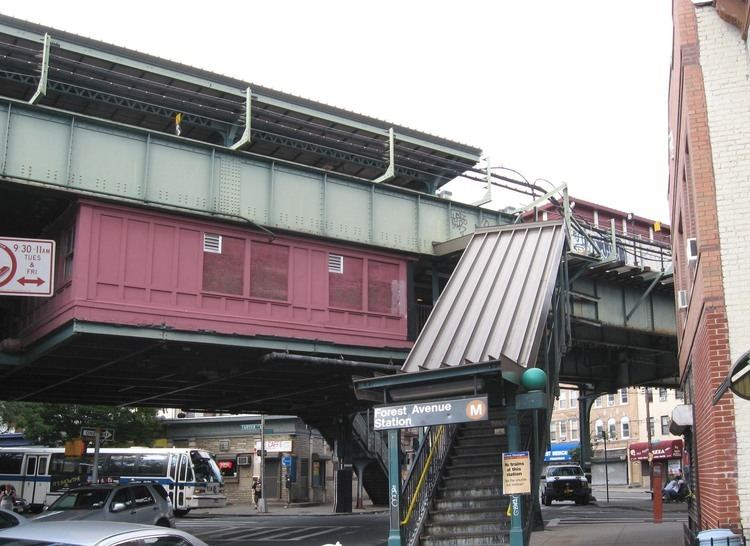
The west end of the line was extended north along Adams Street to an elevated station over Sands Street and High Street in 1896. The connection to the Brooklyn Bridge tracks opened on June 18, 1898, along a private right-of-way halfway between Concord Street and Cathedral Place. The first trains to use it came from the Fifth Avenue Elevated (using the Myrtle Avenue El west of Hudson Avenue).
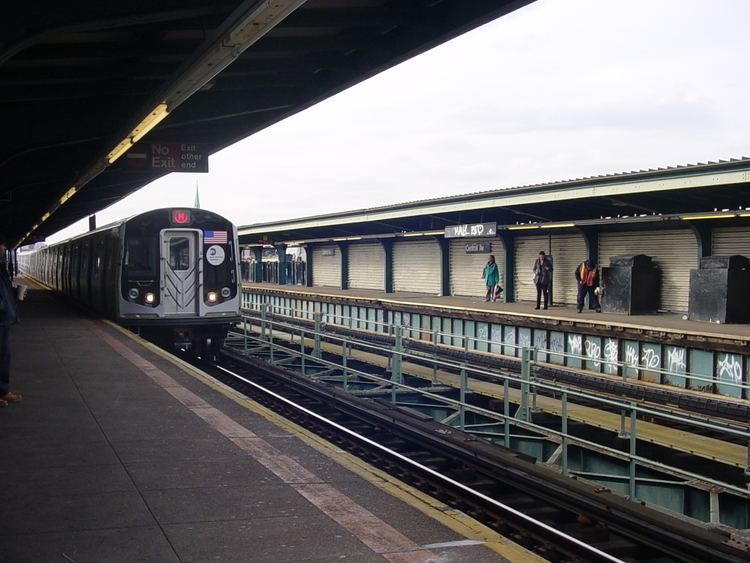
The line was later extended east to Wyckoff Avenue (at the Brooklyn/Queens border). In 1906 the el was connected via a ramp to the Lutheran Cemetery Line, a former steam dummy line to Metropolitan Avenue that had opened on September 3, 1881. That section was elevated as part of the Dual Contracts on February 22, 1915.
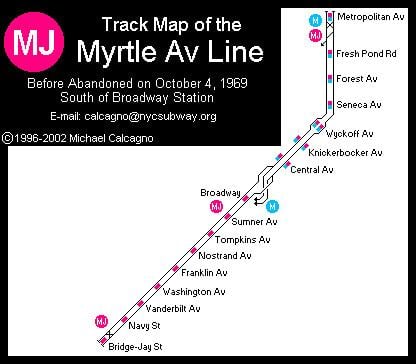
On July 29, 1914, the connection to the Broadway (Brooklyn) Line was opened, allowing Myrtle Avenue Line trains to operate via the Williamsburg Bridge.Construction on this connection began in August 1913. This service became BMT 10 in 1924, and the original Myrtle Avenue Line service to Park Row became BMT 11, later referred to as M and MJ.
As part of the Dual Contracts rebuilding of the Myrtle Avenue El, a third track was installed north of Myrtle Avenue. This track started from a point south of Central Avenue through Myrtle – Wyckoff Avenues to a bumper just south of Seneca Avenue. The only switches were at the southern end so the center track could only be used for layups. It was never used in revenue service and removed by 1946.
On March 5, 1944, the line west of Bridge–Jay Streets was closed coincident with the end of elevated service over the Brooklyn Bridge. On January 21, 1953, the Grand Avenue station was closed so that it could be torn down and therefore complete the demolition of the BMT Lexington Avenue Line. The rest of the line from Broadway to Jay Street closed on October 4, 1969 and was demolished soon after, ending the MJ service. A free transfer to the B54 bus replaced the MJ, and service was increased on that bus. The free transfer at Jay Street was also replaced with a bus transfer.
Starting in summer 2017, the Metropolitan Transportation Authority plans to rehabilitate two parts of the viaduct between the Myrtle Avenue and Metropolitan Avenue stations, necessitating the closure of that segment of the line for ten months. This work is being undertaken in preparation for a reconstruction of the BMT Canarsie Line tunnels under the East River, which will begin in 2019. The work will be done in two parts: one part will rebuild the 310-foot-long (94 m) approaches to the line's junction with the BMT Jamaica Line, and another part will rebuild the Fresh Pond Bridge over the Montauk Branch in Queens. The Fresh Pond Bridge will be replaced during two months in summer 2017, while the connection with the Jamaica Line will be rebuilt from July 2017 to April 2018.
